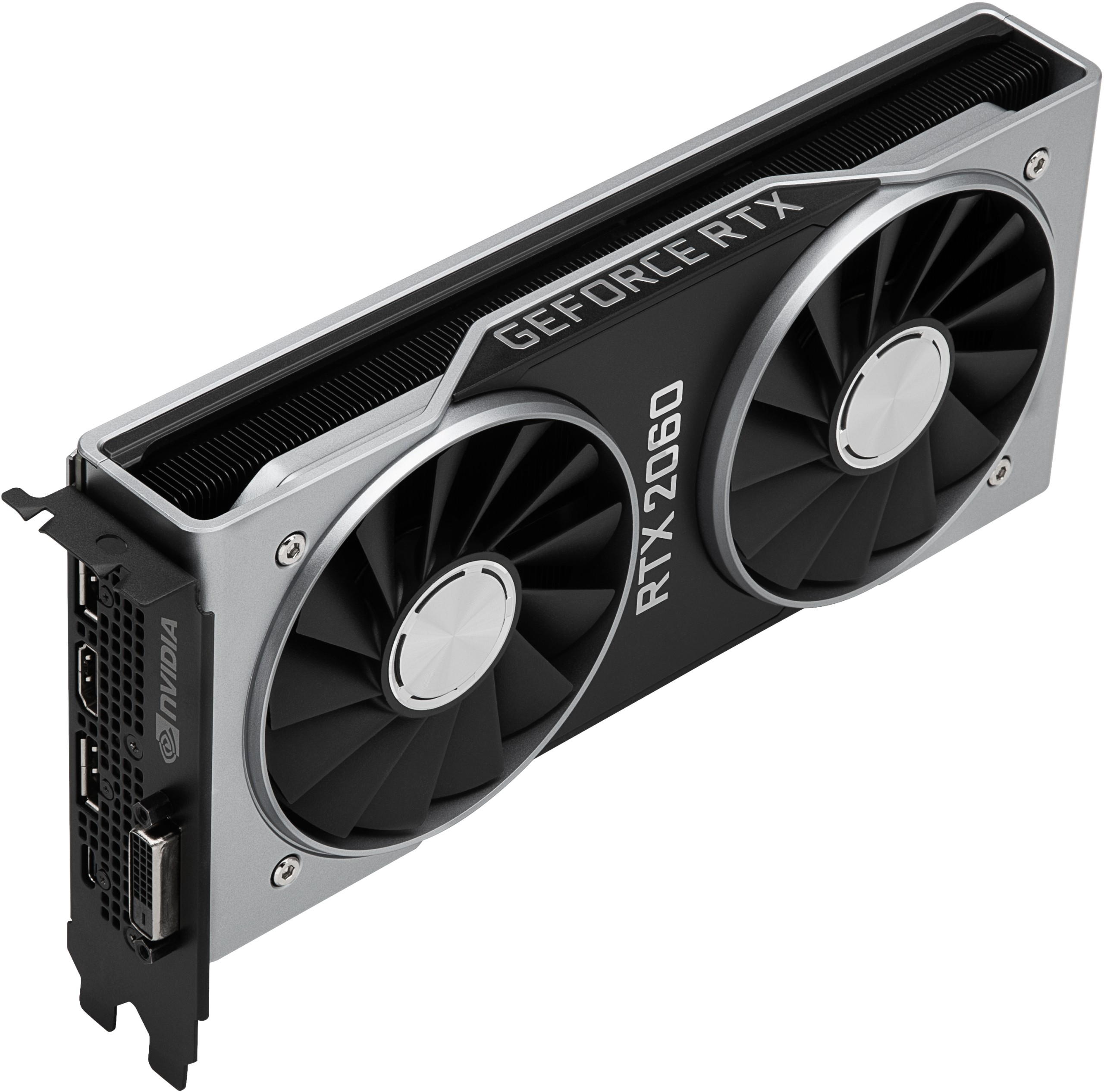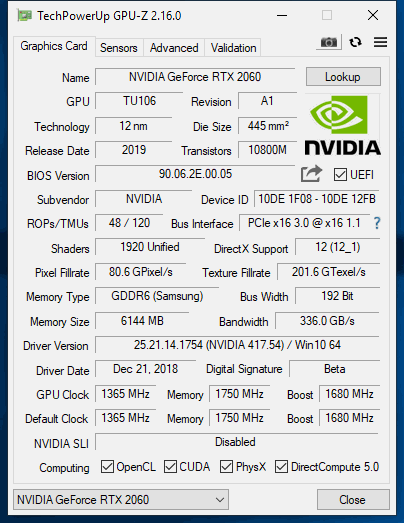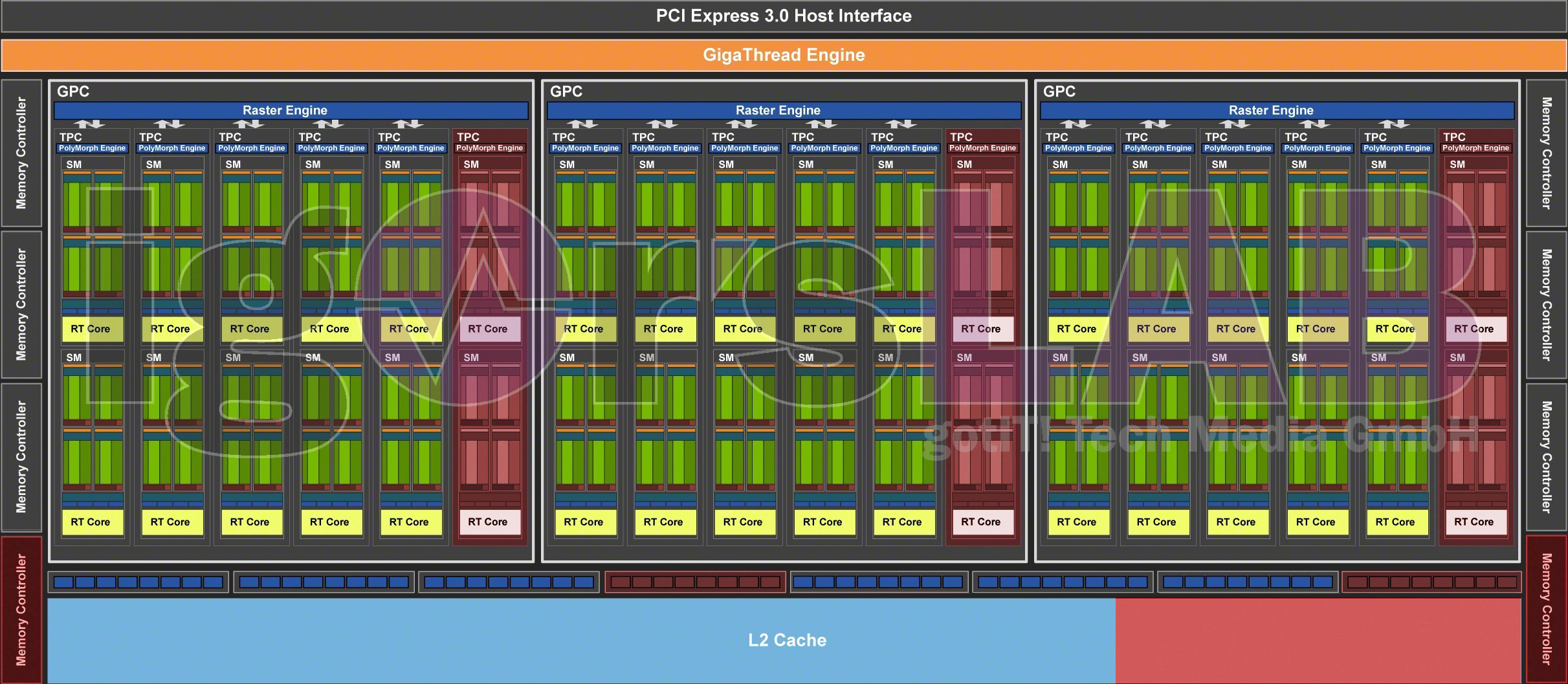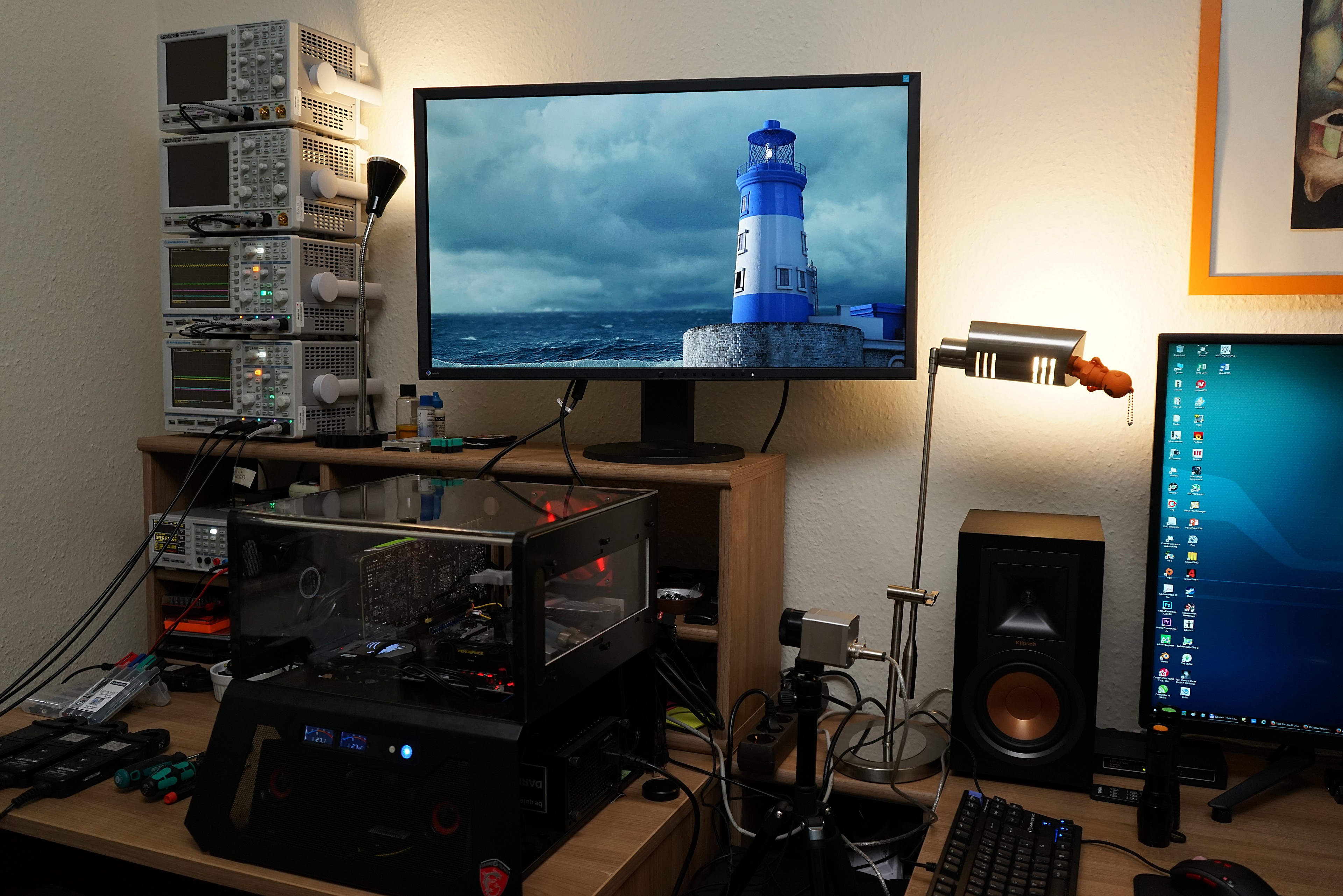Introduction
Today's launch wasn't so easy to realize as an article, but in the end it worked out. The consequence of the somewhat limited sample location is that this time (as with the GeForce RTX 2070) I had to use the data and the map of my US colleague Chris Angelini for the time being and we used all the technical connection possibilities to time difference as usual.
 In any case, there will be follow-ups, i will give my word on that. I am sorry to say that I have to put that first. But we already have extensive gaming benchmarks and many other tests of the new card at our disposal, which we have prepared in our usual form with our own interpreter software. It will also be interesting to look at the Frame Times, the variances and the Unevenness index for each single map.
In any case, there will be follow-ups, i will give my word on that. I am sorry to say that I have to put that first. But we already have extensive gaming benchmarks and many other tests of the new card at our disposal, which we have prepared in our usual form with our own interpreter software. It will also be interesting to look at the Frame Times, the variances and the Unevenness index for each single map.
things, such as the further board details or the component analysis, the really exact power consumption under different conditions, as well as the thermal tests in different superstructures (open benchtable vs. closed housing) as well as the frequency spectra from the audio chamber, I then have to submit my own card in a second part. Board partner cards are still coming, but the comparison to reference would be interesting.
Quo Vadis RTX?
The controversy surrounding Nvidia's Turing graphics architecture seems to divide users into two camps. On the one hand, critics are generally dissatisfied with how the GeForce RTX 20 series cards position themselves in price compared to previous generation boards. Or, on the other hand, they are dissatisfied with the fact that Nvidia has devoted so much resources to perhaps pioneering features that may not have the stunning visual impact or generally function smoothly, except perhaps for those with Ultra-high-end models.
The GeForce RTX 2060 may now be a good way to change these opinions on both fronts. With an RRP of 369 euros, it is below the starting price of the GeForce GTX 1070. And yet the geometric mean of their average frame rates shows that the GeForce RTX 2060 is faster than the GeForce GTX 1070 Ti and is moving more towards the GeForce GTX 1080! In addition, the latest updates to Battlefield V make Nvidia's hybrid rasterization/real-time raytracing concept playable on mid-range hardware. The benchmarks will show this later.
The TU106-300 of the GeForce RTX 2060
Compared to the full TU106-400 on the RTX 2070, the TU106-300 of the GeForce RTX 2060 is now reduced to 1920 CUDA cores, 240 tensor cores, 30 RT cores, 120 TMUs and 48 ROPs. The card will have clock frequencies in the range of 1365 MHz (base clock) and 1680 MHz (boost) and thus can simultaneously deliver up to 6.5 TFLOPs of computing power. Because the card has six RT cores less than the RTX 2070, it can deliver ray tracing performance at about 4-5 giga-rays per second.
Since Nvidia has also kept us surprisingly short in the documents, I have to resort to my own "masterpiece" for the block diagram of the TU106, in which I simply highlighted the areas that no longer exist in red in the block diagram of the complete TU106, to make the difference to the RTX 2070 clear. In addition to the separated units, we also see an L2 cache reduced from 4 MB to 3 MB.
Uncut, the TU106 retains the same 256-bit memory bus as the TU104. But the GeForce RTX 2060 loses two of the graphics processor's 32-bit memory controls, resulting in an aggregated 6GB 192GB GDDR6 bus that can handle up to 336GB/s. Despite the reduced configuration, the GeForce RTX 2060 offers its processor more memory bandwidth than the last generation GeForce GTX 1070 Ti.
By disabling these storage controllers, Nvidia also turns off a pair of ROP partitions and two of the 512KB slices of the L2 cache. What starts in the TU106-400 of the GeForce RTCX 2070 as a GPU with 64 ROPs and 4MB L2 is now reduced to 48 ROPs and 3MB cache in the TU106-300 of the GeForce RTX 2060. As with the GeForce RTX 2070, NVLink support in this price range is long gone. A rogue who thinks evil.
Although the TU106 is the least complex Turing-based GPU to date, its 445 mm2 chip contains no less than 10.8 billion transistors. That's still huge for what Nvidia might once have considered the center of its portfolio. In comparison, the GP106, i.e. the "Midrange Pascal", was a small 200 mm2 chip with 4.4 billion transistors.
Based on early benchmark results in Battlefield V with DXR enabled, it seemed at first as if real-time ray tracing with models below the GeForce RTX 2070 was unthinkable. However, a combination of massive optimization of EA DICE and the relatively small limitations of the TU106-300 means that the GeForce RTX 2060 maintains the playable performance in the one game that currently supports most of the new features.
When it comes to memory specifications, the card offers 6GB of GDDR6 memory along with a 192-bit bus interface, which is 14 Gbps. This would mean 336 GB/s as bandwidth for this card, even more than the 10 Gbps of the GeForce GTX 1080 with the 8GB GDDR5X. But the curtailed expansion of memory could, at least in higher resolutions, become a potential bottleneck in a not-too-distant future.
Unboxing and technical data
Since I haven't received my own card for a test yet, I'm forced to resort to Nvidia's rendering images. The picture gallery could also exemplify the RTX 2070, because it is the same board with the PG160 and the radiator structure is identical.
Of course, I will later deliver my own pictures, the real installation dimensions and things like the weight. Otherwise, what has already been written about the GeForce RTX 2070 FE and its launch applies. The rest is offered by GPU-Z:

Instead of my own analysis, however, I have at least the technical data at a glance, for which one does not need any physically existing test objects:
| GeForce GTX 1060 FE | GeForce RTX 2060 FE | GeForce RTX 2070 FE |
GeForce GTX 1070 FE |
|
| Architecture (GPU) |
Pascal (GP106) | Turing (TU106) | Turing (TU106) | Pascal (GP104) |
| CUDA Cores |
1280 | 1920 | 2304 | 1920 |
| Tensor Cores |
N/A | 240 | 288 | N/A |
| RT Cores |
N/A | 30 | 36 | N/A |
| Texture Units |
80 | 120 | 144 | 120 |
| Base Clock Rate |
1506 MHz | 1365 MHz | 1410 MHz | 1506 MHz |
| GPU Boost Rate |
1708 MHz | 1680 MHz | 1710 MHz | 1683 MHz |
| Storage expansion |
6GB GDDR5 | 6GB GDDR6 | 8GB GDDR6 | 8GB GDDR5 |
| Storage bus |
192-bit | 192-bit | 256-bit | 256-bit |
| Bandwidth |
192 GB/s | 336 GB/s | 448 GB/s | 256 GB/s |
| Rops |
48 | 48 | 64 | 64 |
| L2 Cache |
1.5 MB | 3 MB | 4MB | 2MB |
| Tdp |
120 W | 160 W | 185W | 150w |
| Transistors |
4.4 billion | 10.8 billion | 10.8 billion | 7.2 billion |
| The size |
200 mm2 | N/A | 445 mm2 | 314 mm2 |
| Sli |
No | No | No | Yes (MIO) |
Test system and measurement methods
We have already described the test system and the methodology in the basic article "How We Test Graphics Cards" in detail and therefore, for the sake of simplicity, only refer to this detailed Description. So if you want to read everything again, you are welcome to do so. Meanwhile, the US colleagues and I use a CPU with the same clock rate and an almost identical test setup including the other framework conditions, so that we can deliver (and exchange) comparable results.
If you are interested, the summary in table form quickly provides a brief overview:
| Test systems and measuring rooms | |
|---|---|
| Hardware: |
Intel Core i7-8700K x 5 GHz MSI X370 Gaming Pro Carbon AC 2x 8GB KFA2 HoF DDR4 4000 1x 1 TByte Toshiba OCZ RD400 (M.2, System SSD) 2x 960 GByte Toshiba OCZ TR150 (Storage, Images) Be Quiet Dark Power Pro 11, 850-watt power supply |
| Cooling: |
Alphacool Ice Block XPX 5x Be Quiet! Silent Wings 3 PWM (Closed Case Simulation) Thermal Grizzly Kryonaut (for cooler change) |
| Housing: |
Lian Li PC-T70 with expansion kit and modifications Modes: Open Benchtable, Closed Case |
| Monitor: | Eizo EV3237-BK |
| Power consumption: |
non-contact DC measurement on the PCIe slot (Riser-Card) non-contact DC measurement on the external PCIe power supply Direct voltage measurement on the respective feeders and on the power supply 2x Rohde & Schwarz HMO 3054, 500 MHz multi-channel oscillograph with memory function 4x Rohde & Schwarz HZO50, current togor adapter (1 mA to 30 A, 100 KHz, DC) 4x Rohde & Schwarz HZ355, touch divider (10:1, 500 MHz) 1x Rohde & Schwarz HMC 8012, digital multimeter with storage function |
| Thermography: |
Optris PI640, infrared camera PI Connect evaluation software with profiles |
| Acoustics: |
NTI Audio M2211 (with calibration file) Steinberg UR12 (with phantom power for the microphones) Creative X7, Smaart v.7 own low-reflection measuring room, 3.5 x 1.8 x 2.2 m (LxTxH) Axial measurements, perpendicular to the center of the sound source(s), measuring distance 50 cm Noise in dBA (Slow) as RTA measurement Frequency spectrum as a graph |
| Operating system | Windows 10 Pro (1809, all updates), driver as of 10.11.2018 |
- 1 - Vorstellung, Daten und Testsystem
- 2 - Was kann Turing besser?
- 3 - Mesh- und variables Shading
- 4 - DLSS und Raytracing
- 5 - Tear Down: Platine und Kühler
- 6 - Battlefield V (DXR)
- 7 - AotS: Escalation (DX12)
- 8 - Destiny 2 (DX11)
- 9 - Far Cry 5 (DX11)
- 10 - Forza Motorsport 7 (DX12)
- 11 - GTA V (DX11)
- 12 - Metro Last Light (DX11)
- 13 - Shadow of the Tomb Raider (DX12)
- 14 - Ghost Recon Wildlands (DX11)
- 15 - The Division (DX12)
- 16 - The Witcher 3 (DX11)
- 17 - Wolfenstein 2 (Vulkan)
- 18 - Leistungsaufnahme, Temperaturen und Geräuschentwicklung
- 19 - Zusammenfassung und Fazit








































Kommentieren